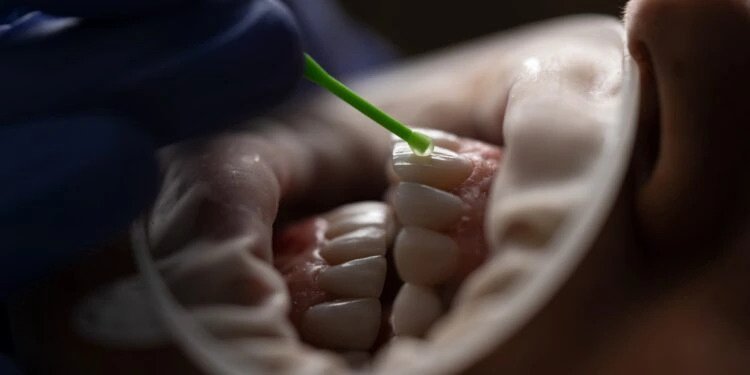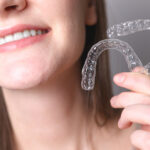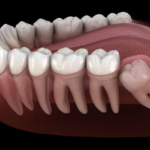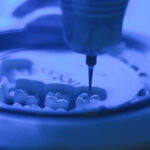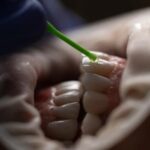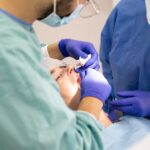In the ever-evolving landscape of dental care, a groundbreaking development is adding to tooth restoration’s possibilities, offering new hope for those grappling with decaying teeth. The traditional approach to treating tooth decay has often involved dental fillings or crowns, but a recent breakthrough has opened the door to a more revolutionary solution – tooth enamel regeneration through the use of a specialized gel.
The Challenge of Decaying Teeth
Tooth decay is a prevalent dental issue affecting millions of people worldwide. It occurs when the protective layer of enamel on the tooth’s surface breaks down, leaving the inner layers susceptible to bacterial invasion. Factors such as poor oral hygiene, sugary diets, and genetic predisposition contribute to the erosion of enamel, leading to cavities and eventual tooth decay.
For years, the primary methods of addressing decaying teeth have been dental fillings and crowns. While these interventions have been effective to a certain extent, they often involve the removal of damaged tooth material, which can weaken the tooth’s structure over time. Moreover, the aesthetic concerns associated with visible fillings and the potential for long-term complications have driven researchers to explore alternative approaches.
A Gel That Holds the Promise
The development is adding to tooth restoration’s possibilities, researchers have introduced a gel that holds the promise of regenerating tooth enamel, marking a paradigm shift in dental care. This innovative solution aims to address the root cause of tooth decay by stimulating the natural regeneration of enamel, offering a more sustainable and biocompatible alternative to traditional treatments.
The key to this breakthrough lies in the formulation of the gel, which incorporates bioactive compounds known to enhance enamel remineralization. These compounds work in synergy to create an environment conducive to the regeneration of enamel, effectively reversing the damage caused by decay.
Tooth Restoration’s Possibilities
The introduction of this enamel-regenerating gel is adding a new dimension to tooth restoration’s possibilities. Unlike conventional treatments that focus on repairing or replacing damaged teeth, this gel works with the body’s natural processes to rebuild enamel, the first line of defense against decay.
The process begins by applying the gel to the affected tooth or teeth. The bioactive compounds penetrate the enamel, stimulating the remineralization process. This process encourages the deposition of essential minerals, such as calcium and phosphate, onto the tooth’s surface, effectively rebuilding the enamel structure.
What sets this approach apart is its ability to restore enamel without the need for invasive procedures that involve the removal of tooth material. Preserving as much natural tooth structure as possible is crucial for long-term dental health, and this gel offers a promising solution in this regard.
Beyond Repair: A Regenerative Approach
Traditional dental treatments often focus on repairing or replacing damaged teeth, but the regenerative approach offered by the enamel gel goes beyond mere restoration. By harnessing the body’s natural ability to regenerate enamel, this innovative solution addresses the underlying causes of tooth decay, providing a more sustainable and holistic approach to dental care.
Moreover, the regenerative nature of the gel may have implications for preventive dentistry. Regular application of the gel could potentially strengthen enamel and reduce the risk of future decay, making it a valuable tool in the ongoing battle against dental issues.
The Aesthetic Advantage
In addition to its regenerative properties, the enamel gel also offers an aesthetic advantage over traditional treatments. Dental fillings and crowns, while effective in restoring function, can be visually conspicuous and may affect the overall appearance of the smile. In contrast, the gel facilitates the natural rebuilding of enamel, ensuring a seamless and natural look that blends with the surrounding teeth.
This aesthetic advantage is particularly significant for individuals who prioritize the cosmetic aspect of dental care. The regenerative approach not only addresses the health of the tooth but also contributes to a more visually appealing result, enhancing both oral health and overall well-being.
Challenges and Future Direction
While the enamel-regenerating gel represents a significant leap forward in dental care, challenges and questions remain. Researchers are actively exploring factors such as the longevity of the regenerative effects, optimal application protocols, and the potential for broader applications in preventive dentistry.
Long-term studies are essential to determine the durability of the regenerated enamel and its resistance to future decay. Additionally, refining the application process to maximize effectiveness and exploring ways to make this technology more widely accessible are crucial steps in the ongoing development of this innovative approach.
Regeneration Too Late For The Older Generations, But…
The promise of tooth enamel regeneration through a specialized gel is reshaping the landscape of dental care, offering a revolutionary solution to the age-old problem of decaying teeth. By stimulating the natural regenerative processes of enamel, this breakthrough provides a more sustainable, biocompatible, and aesthetically pleasing alternative to traditional treatments.
As research and development in this field progresses, the enamel-regenerating gel holds the potential to redefine how we approach dental care. With its regenerative capabilities, this innovative solution not only restores teeth but also addresses the root causes of decay, ushering in a new era of preventive and regenerative dentistry.
While challenges and questions remain, the momentum behind this groundbreaking technology suggests a promising future for tooth enamel regeneration. As advancements continue, the day may not be far off when the application of a simple gel becomes a routine and transformative part of dental care, preserving smiles and oral health for generations to come.

